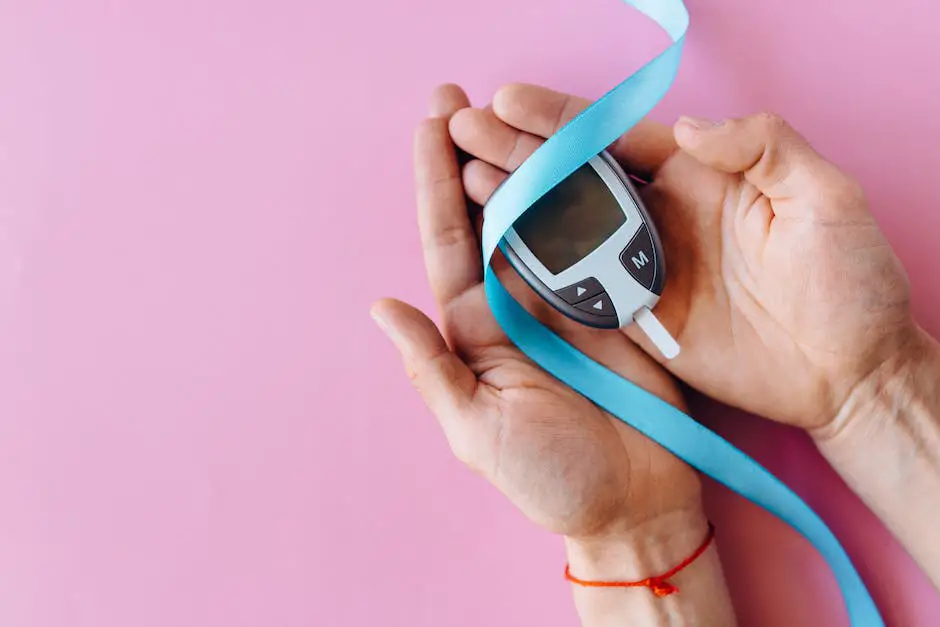Engaging in regular physical activity is an essential part of managing diabetes, along with a healthy diet and medication therapy. When we comprehend the relationship between diabetes and exercise, it becomes clear that exercise plays a significant role in managing insulin and glucose levels, improving insulin sensitivity, and aiding in weight control. Moreover, there are diverse types of exercises – including cardio, strength training, flexibility, and balance exercises – that are suitable and beneficial for individuals with diabetes. Crafting a balanced exercise routine, understanding the optimal frequency, duration, and intensity of exercise, and appreciating the necessity for warm-up and cool-down phases, becomes instrumental. Safeguarding your health through adequate precautionary measures such as monitoring glucose levels, staying hydrated, and preventing hypoglycemia, is just as critical during this journey.
Understanding Diabetes and Exercise
Understanding Diabetes and Exercise
In People with diabetes, their bodies either don’t make enough insulin or can’t use the insulin it does produce effectively, leading to high levels of glucose in the blood. This condition can lead to numerous health issues, such as heart disease, kidney disease, and nerve damage.
Impact of Exercise on Insulin and Glucose Levels
Just like a healthy diet, exercise is vital for proper insulin function. When we exercise, our muscles need more glucose, which is taken from our bloodstream. In other words, exercise reduces the amount of glucose in our blood, helping to lower high blood glucose levels, which is especially beneficial for those with diabetes.
Moreover, regular exercise can increase insulin sensitivity, which means your body’s cells can better use available insulin to absorb glucose during and after physical activity. This can further help in managing diabetes.
The Role of Exercise in Weight Management
Implementing regular exercise into your routine can also assist with weight management. Maintaining a healthy weight can significantly reduce the risk of developing Type 2 diabetes or help manage the disease if you are already diagnosed. Additionally, regular physical activity can reduce abdominal fat, which is particularly dangerous as it can lead to heart disease and stroke.
Recommended Exercise Routine for Men with Diabetes
Walking, strength training, and flexibility exercises are vital parts of a balanced exercise routine. Aim for at least 30 minutes of moderate to vigorous intensity aerobic exercises like brisk walking, biking, or swimming five days a week.
Additionally, incorporate strength training exercises two to three times a week. These can include lifting weights, using resistance bands, or body weight exercises like push-ups and squats.
Flexibility exercises, such as stretching or yoga, can also be part of your weekly routine. These activities help to improve balance, reduce muscle stiffness, and the risk of injuries.
Remember, always talk to your healthcare provider before starting a new exercise routine. They can help you choose the right activities and monitor your progress.

Types of Exercises Suitable for Diabetics
Cardio Exercises for Men with Diabetes
Cardiovascular exercises are highly beneficial for individuals with diabetes because they help in controlling blood glucose levels. Regular cardio exercises, like brisk walking, swimming, cycling, or running, can improve heart health and endurance. These exercises also help in burning calories and losing weight, which is crucial for diabetes management. Aim for at least 30 minutes of cardio exercise like brisk walking five days a week.
Strength Training for Diabetes Management
Strength training exercises are equally essential for managing diabetes. These exercises involve the use of resistance, like dumbbells or body weight, to increase muscular strength and endurance. For diabetes patients, strength training can help in glucose control by increasing muscle mass. More muscle mass means the body can store more glucose, thereby reducing glucose in the bloodstream. Simple exercises such as squats, lunges, push-ups or weight lifting can form part of strength training routines. As a guideline, aim for two to three sessions each week.
Flexibility Exercises And Diabetes
Individuals with diabetes should also incorporate flexibility exercises in their exercise routine. This type of exercise helps in maintaining joint flexibility and range of motion. By maintaining flexibility, individuals with diabetes can prevent joint stiffness and maintain mobility, which is critical for regular physical activity. Yoga and stretching exercises are excellent options for improving flexibility. Aim to include flexibility exercises in your routine at least two or three times a week.
Balance Exercises for Diabetes
Balance exercises are essential exercises for individuals with diabetes, as they help in reducing the risk of falls, which is often an associated risk with diabetes due to loss of sensation in the feet. Exercises like heel-to-toe walk, standing leg lifts or tai chi, can increase stability and coordination. These exercises can be done daily and prove more beneficial as individuals age.

Creating a Balanced Exercise Routine
Understanding Exercise Routine Basics
The first step in constructing a balanced exercise routine is understanding the fundamental aspects: frequency, duration, and intensity of workouts. In general, it’s recommended for men with diabetes to partake in physical activity every day, with the goal being at least 150 to 175 minutes per week.
These workouts should be divided in a way that does not exceed 75 minutes per session, to avoid extreme exertion and the resultant potential for hypoglycemia or low blood sugar. You can start with 20-30 minutes of moderate-intensity exercise each day and gradually increase as your fitness level improves.
Intensity refers to the effort you put into each exercise. For men with diabetes, moderate intensity is typically recommended, such as brisk walking, bicycling slower than 10 miles per hour, or light yard work. However, do consult your healthcare provider before starting a new exercise regimen.
Warm-Up and Cool-Down
Warm-up and cool-down periods are crucial to any exercise routine. They prepare your body for increased physical activity and help return it to a resting state afterwards. Warming up for at least 5-10 minutes before you start the primary workout activity can improve your performance and reduce the chances of injury. This can consist of low-intensity movements such as walking or light stretching.
Similarly, cooling down is critical post-exercise as it helps to gradually decrease your heart rate and blood pressure, reducing the risk of dizziness and other complications. A cool-down period typically lasts 5-10 minutes and could include activities such as light stretching or walking.
Balancing Different Types of Exercises
For a balanced routine, it’s recommended to incorporate various types of exercises into your workout. Aerobic exercises like walking, bicycling, or running should ideally make up the majority of your workout routine since they help improve heart health and insulin sensitivity.
Resistance or strength training exercises, like weightlifting or resistance band workouts, should ideally be included twice a week. They help maintain and build muscle, which plays a significant role in managing blood glucose levels.
Additionally, flexibility and balance exercises such as yoga or tai chi can be incorporated into your routine to improve stability and reduce the risk of falls.
It’s also important to incorporate periods of rest into your weekly routine to allow your muscles to recover and prevent overexerting yourself. After all, balancing exercise with adequate rest is as crucial to managing your diabetes as the exercises themselves.
Remember, always consult your healthcare provider before starting or changing your exercise regimen. They can provide personalized recommendations based on your health condition, lifestyle, and overall physical status.

Safety Measures and Precautions
Monitor Blood Glucose Levels
Exercising can significantly lower your blood sugar, hence it is crucial that you check your blood glucose levels before starting your exercise routine. Blood Sugar should be about 140 to 200 mg/dL prior to starting a workout. For effective monitoring, use a blood glucose meter or a continuous glucose monitor (CGM) recommended by your healthcare provider.
After finishing your exercise session, check your blood glucose again. This is essential to determine how your body has reacted to the workout and to avoid the risk of hypoglycemia (low blood sugar). If your glucose levels drop too low, consume a carbohydrate snack or glucose tablets to raise your levels.
Stay Hydrated
Hydration is key to ensuring a healthy and safe workout, especially for men with diabetes. Dehydration can increase your blood sugar levels, which can be dangerous alongside already fluctuating levels caused by exercise. Thus, it’s recommended to drink water before, during, and after your workout. However, the exact amount of fluids you need will depend on many factors such as the length of your workout and the weather conditions. Ensure you choose a drink that isn’t high in sugar.
Recognize the Signs of Hypoglycemia
During exercise, it’s crucial to understand the symptoms of hypoglycemia so that immediate steps can be taken to control it. Hypoglycemia symptoms can include dizziness, shaking, sweating, headache, blurry vision, and a feeling of nervousness or anxiety. If you feel yourself experiencing such symptoms, stop your workout immediately and take appropriate action such as consuming a glucose-rich snack.
Make Modifications as Necessary
In case your blood glucose levels fall into an unsafe range before your scheduled workout, you may need to modify your activity. Instead of performing intense exercises like weight lifting or running, you might have to switch to more gentle movements such as walking or stretching. If the levels are too low, it’s safer to skip the exercise session altogether and wait until your glucose levels normalise to resume your exercise regime.
Consult with Healthcare Provider
While exercise is beneficial for managing diabetes, the variables associated with diabetes such as insulin levels, medication, diet, and physical activity can make it complicated. Thus, it’s vital to consult with your healthcare provider or a diabetes educator. They can help you develop an exercise plan that’s tailored to your specific circumstances and give advice on blood sugar monitoring and maintaining ideal glucose levels.

Physical activity stands as a powerful tool in our ability to manage and control diabetes. Armed with an understanding of how diabetes interacts with exercise and the variety of exercises that are beneficial, one is well-equipped to establish a balanced and effective exercise routine. Incorporating various exercise types and ensuring proper warm-up and cool-down periods enables an optimized routine. However, safety should always come first. By maintaining vigilance with measures such as careful glucose monitoring, adequate hydration, and knowing when to modify exercise in order to prevent hypoglycemia, exercise can become a comfortable and vital part of your diabetes management plan. The power to manage diabetes is, quite literally, in your hands and feet!
